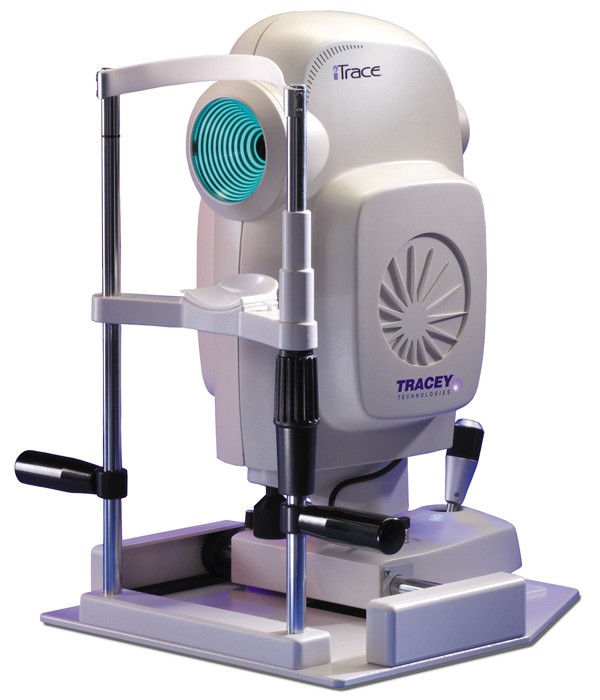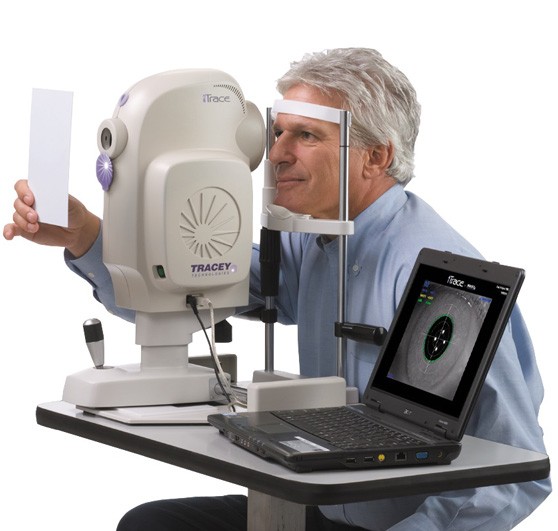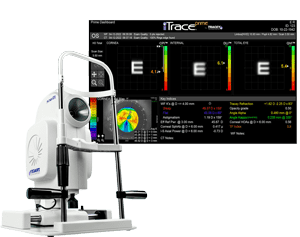Why Dr. Dee Stephenson Calls the iTrace One of Her Practice “MVPs”
Meet Dee Stephenson, MD

We often talk about how the iTrace can be one of the most valuable pieces of equipment in a practice because it can help with so many different parts of eye care — from helping a patient understand their own quality of vision to ensuring the most precise IOL placement possible during (and after) surgery. We don’t think doctors interested in learning more about the iTrace should simply take our word for it, though.
We caught up with iTrace owner and experienced ophthalmologist, Dr. Dee Stephenson, of Stephenson Eye Associates in Sarasota, Florida about all the different areas in which the device has been integral for her and why she calls it an “MVP” in her practice.
Training Technicians
Because the iTrace is capable of such a wide range of applications, some doctors naturally assume that the technology is difficult to operate — possibly posing a challenge when it comes to training technicians. Dr. Stephenson told us that this assumption is far from accurate: “It’s a fairly easy tool to use for the technicians despite its many, many facets.” She continued, “My technicians can even show the patient the best lens or the best procedure to give them the best outcome, which is really helpful.”
Educating the Patient About their Vision
One of the areas where the iTrace is truly unique is that certain displays are designed with patient education in mind. The Dysfunctional Lens Index (DLI) display, for example, can help you or your staff show the patient a realistic interpretation of their corneal, internal, and combined vision to help them understand the source of a problem.
Dr. Stephenson agreed wholeheartedly: “There’s a lot of avenues for this machine to really give patients peace of mind for the symptoms that have been totally blown off in other offices. With the iTrace, you can actually give them a reason to come to you because you spend a little extra time with them to educate them and make them feel comfortable.”

Making Decisions Before Surgery
Because of the depth of information, the iTrace gives doctors about their patients’ vision, it’s designed to be a critical tool in making decisions about vision correction — and that’s not just limited to less experienced surgeons, according to Dr. Stephenson: “The iTrace helps new and veteran surgeons by giving them information and guidelines to base their recommendations on, or paths not to go down for certain patients.”
Ultimately, the iTrace is an essential device for any surgeon who wants to make the right decision every time. In Dr. Stephenson’s words, “It’s a tool that helps you refine your techniques.”
Creating the Best Possible Outcomes for the Patient
As Dr. Stephenson told us, “The iTrace has so many more things for my everyday practice then you could possibly imagine. In fact, I learn something new every time.” This includes her use of the tool during post-operative exams. “I can see the alignment post-cataract surgery and, if it’s off, where to rotate a lens to get it on the appropriate axis, which is very helpful.”
The iTrace comes equipped with the Toric Check feature, which harnesses the power of Ray Tracing to perform ultra-precise post-op analysis without dilation. Dr. Stephenson told us that this is a huge benefit for her practice, but really, everything in the iTrace combines to create the best possible experience for patients. According to her, “The better the pre-op testing technology, the better the outcome. I want my patient’s experience to be as dramatic as a LASIK outcome is.” She added that the iTrace has been one of the single most important factors in consistently achieving patient satisfaction in her practice.

Who Is the Ideal Fit for the iTrace?
Because the iTrace can do so much in so many different parts of the patient experience, Dr. Stephenson said it really is a tool that anyone can benefit from. “There’s enough of us out there that use this and really rely on it, even though we all do different things or have different specialties. There is a breadth and depth of knowledge you can learn from using this tool — it helps you become a better surgeon.”
When asked to reflect on her overall experience with the iTrace, she was unequivocal in her praise: “I’ve never regretted purchasing the iTrace — never ever, ever, not even for one moment.”

